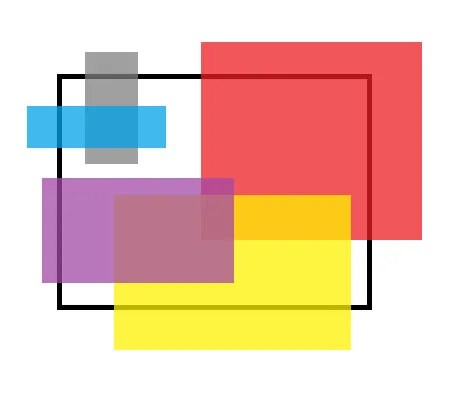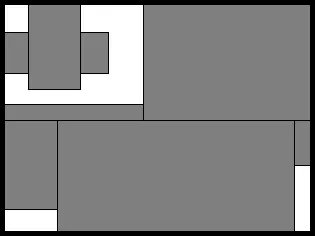如何判断一个矩形是否被其上方的矩形遮挡?
2
假设有n个覆盖矩形,可以使用平面扫描(扫描线算法)和增强的自底向上splay树(伸展树)以O(n log n)的时间解决此问题。
Clip all covering rectangles to the reference.
By sorting, reduce the problem to one where all x-coordinates of the covering rectangles are integers in [0, 2n). Transform the y-coordinates similarly.
Create a 2n-node splay tree. The value of node j is how many rectangles intersect the sweep line in the open interval (j, j + 1). For O(log n)-time updates, don't store j's value in j but rather the difference between j's value and j's parent's value (the root stores its true value). Rotations are slightly more complicated: the rotation
y x / \ / \ x c -> a y / \ / \ a b b cinvolves updating
b.diff += x.diff; // if b exists x.diff += y.diff; y.diff -= x.diff;Each node also tracks its subtree minimum. For compatibility with the value representation previously described, node j stores the difference of its subtree minimum and its value. During a rotation:
y.diffmin = min(0, b.diffmin + b.diff, c.diffmin + c.diff);At the end of a splay operation, update the root the same way. Omit b or c if they don't exist.
Sweep the line. For x in [0, 2n), find all rectangles whose left-hand side is at x and update the tree as follows. For a rectangle from y0 to y1, splay y1 and increment the diff of its left child (and recompute diffmin), then splay y0 and decrement the diff of its left child.
After all left-hand sides have been processed, check the tree min. If it's zero, then the reference is not covered.
Process the right-hand sides in much the same way (swap increment and decrement in the description).
2
原文链接

